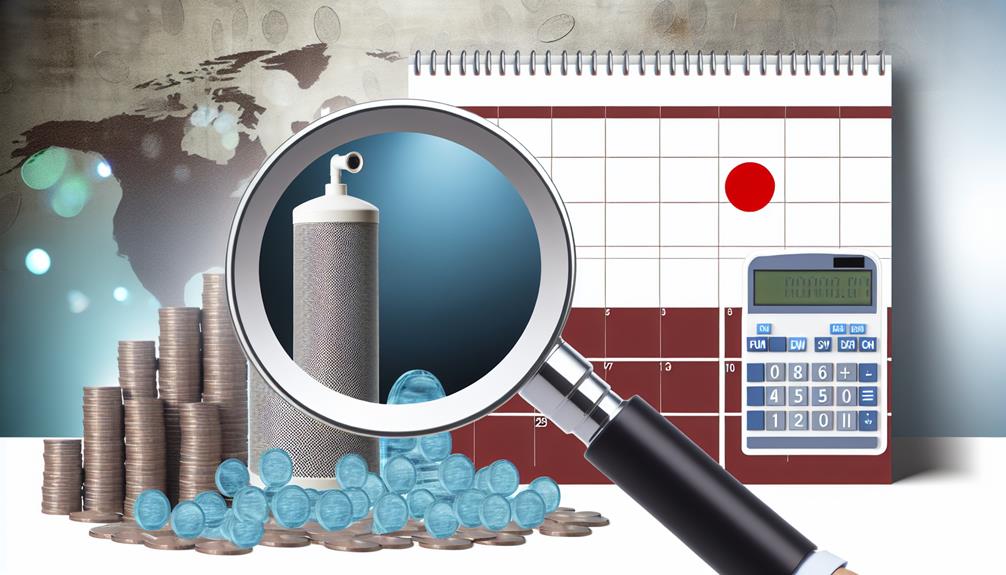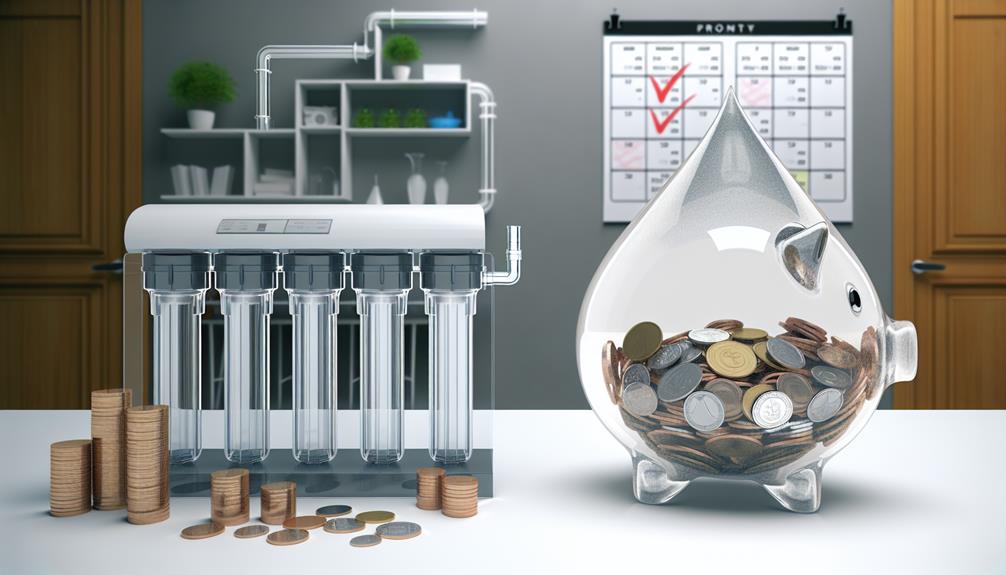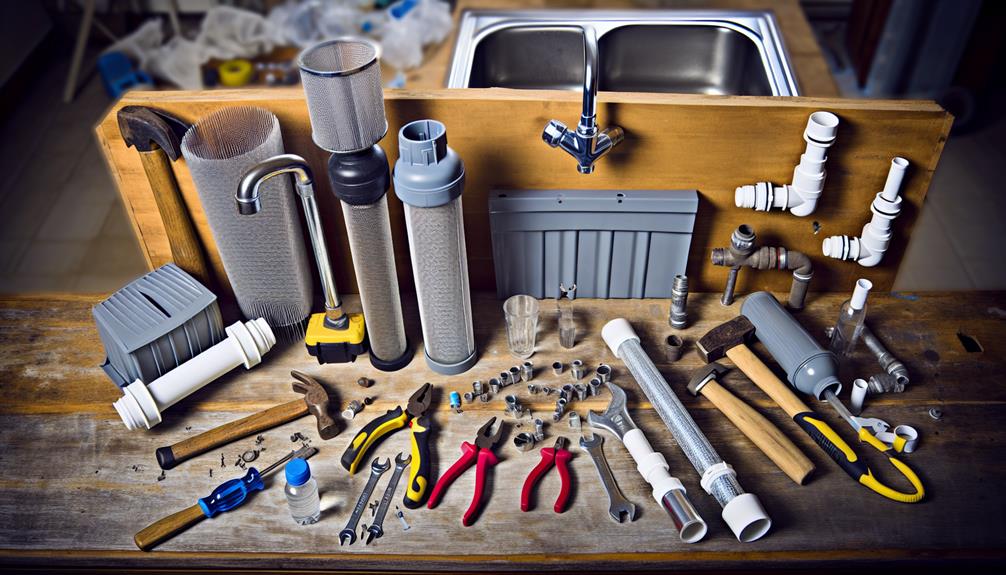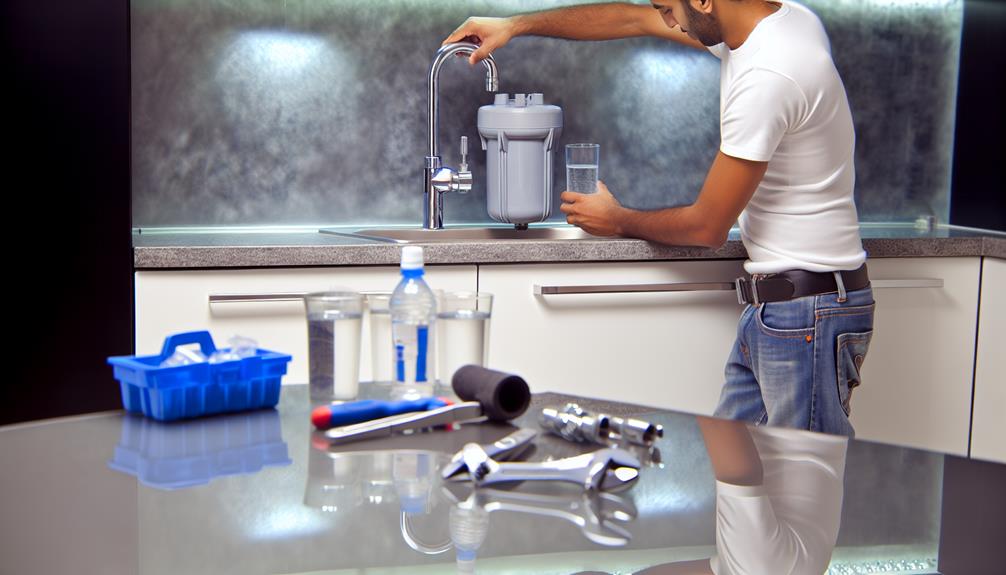[TITLE]: Why Schedule an Annual Water Filter Checkup?
[ONE PARAGRAPH]:
Fostering a fully functional filtration system fundamentally safeguards your sips and sustains your system's longevity. You've invested in a water filter to ensure that the water you drink is clean and safe, but like any other piece of vital equipment, it requires regular checkups to maintain optimal performance.
As you consider the health benefits and the potential savings from preventative maintenance, you might wonder whether the cost of an annual checkup is worthwhile. Comparing service plans and understanding the long-term savings against the hidden costs of neglect could lead you to make an informed decision. Weighing the pros and cons of DIY versus professional fees is also crucial.
Stick around to discover how a simple annual checkup could prevent a plethora of problems down the line, protecting both your health and your wallet.
Understanding Checkup Costs

Grasping the nuances of checkup costs is crucial, as these expenses can significantly impact your annual maintenance budget for water filtration systems. When you're calculating these costs, you must consider the filter lifespan and maintenance frequency. These two factors are inextricably linked; a longer filter lifespan generally means less frequent replacement and maintenance, potentially reducing costs over time.
It's essential to analyze the manufacturer's specifications regarding filter lifespan. Manufacturers typically provide an estimated duration or volume of water that a filter can treat effectively. However, actual lifespan can be influenced by water quality, usage patterns, and environmental factors. You'll need to adjust your maintenance schedule based on these real-world conditions to ensure optimal performance.
Maintenance frequency is another critical determinant. It's not just about replacing the filter at the end of its service life; it's about regular monitoring to prevent inefficiencies or failures. This might include periodic inspections and cleaning to maintain water quality and flow rate. While this may seem like an added expense, it's a preventative measure that can save you from more costly repairs or replacements due to neglect.
Comparison of Service Plans
While understanding the costs associated with filter checkups is fundamental, it's equally important to carefully evaluate the various service plans available to manage these expenses effectively. You'll want to scrutinize each plan's details, focusing on how they address maintenance frequency and filter lifespan—two critical variables that can significantly impact your water filtration system's performance and longevity.
Here's an analytical comparison to guide your decision:
| Service Plan Features | Plan A | Plan B |
|---|---|---|
| Maintenance Frequency | Quarterly | Bi-Annually |
| Filter Lifespan | Up to 12 months | Up to 18 months |
| Technical Support | 24/7 Call Center | Business Hours Only |
| Parts Coverage | All inclusive | Critical components only |
| Cost Efficiency | Higher upfront cost | Lower upfront, may incur additional costs later |
Plan A offers a more frequent maintenance schedule, which could be advantageous if your water source is known to have high sedimentation or contamination levels, placing more demand on your filter system. Conversely, Plan B suggests a longer filter lifespan, potentially reducing the number of replacements needed, but it might not be suitable for all water conditions. It's essential to consider the technical support provided, as immediate assistance can prevent prolonged disruptions. Also, assess whether the plan covers all parts or only critical ones, as this could affect future out-of-pocket expenses. Lastly, analyze the cost efficiency—higher initial costs might save you money in the long run by preventing major malfunctions.
Long-Term Savings Analysis

Evaluating long-term savings requires you to meticulously calculate the total cost of ownership for each service plan, factoring in both immediate expenses and potential future savings. To conduct a thorough analysis, you'll first need to consider the filter lifespan. This is the period over which your filter effectively removes contaminants before it needs replacement. A longer lifespan generally correlates with fewer replacements and thus, lower costs over time.
Next, account for the impact of contaminant buildup. Over time, accumulated contaminants can reduce the efficiency of your filter, leading to increased energy usage and maintenance requirements. These factors all contribute to the overall expenses. By scheduling regular checkups, you can ensure your filter operates at peak performance, thereby extending its lifespan and minimizing the long-term financial impact.
In your analysis, include the cost of potential checkups and maintenance against the savings from optimized filter performance. Calculate how preventive measures can prolong the filter's functionality and prevent costly emergencies. By keeping these technical aspects in mind, you'll be able to discern which service plan offers the best long-term savings, ensuring that you're not only protecting your health but also your wallet.
Hidden Costs of Neglect
Understanding the financial implications of regular maintenance leads us to consider the often-overlooked expenses incurred when water filter upkeep is neglected. An ignored water filter doesn't merely cease to perform; it can manifest as a sinkhole for costs that aren't immediately apparent.
Let's dissect these hidden costs with a focus on filter lifespan and contaminant buildup.
A neglected filter's lifespan shortens drastically. Manufacturers calibrate filters to function optimally for a specified period, contingent on regular maintenance. Without it, you're not just risking subpar performance; you're accelerating the filter's demise. This premature expiration necessitates replacement well before the projected end of life, leading to more frequent purchases.
Contaminant buildup is another insidious issue. As particulates accumulate, they can cause systemic blockages, reducing water flow and pressure. The strain placed on a clogged filter forces pumps and associated mechanisms to work harder, increasing energy consumption and wear and tear. This not only spikes utility bills but also hastens the depreciation of your entire water filtration system.
Technical analysis shows that these hidden costs, while preventable, compound stealthily. They chip away at your finances, culminating in a significant financial burden—a stark contrast to the predictable, manageable fees associated with routine checkups.
DIY Versus Professional Fees

When considering the upkeep of your water filtration system, you're faced with the decision to either embark on a do-it-yourself (DIY) project or to incur the costs of hiring a professional. This choice hinges on several factors, including the complexity of your system, your technical acumen, and the maintenance frequency required for optimal performance.
- DIY Considerations:
- Access to the correct tools and replacement parts
- Understanding the specific maintenance needs for different filter types
- The potential for incorrect installation, which could compromise system integrity
- Time investment and the opportunity cost of that time
Hiring a professional, while often more expensive upfront, can mitigate the risks associated with improper maintenance. Professionals are equipped with the expertise to handle a wide array of filter types and are up-to-date with the latest industry standards and technologies. The frequency of maintenance can also dictate cost-effectiveness; if your system necessitates frequent checks or has a history of issues, a professional service plan might be more economical in the long run.
Analyze your situation meticulously, considering the technical specifications of your filtration system and the implications of each approach on its long-term functionality and your finances.
Conclusion
In conclusion, regularly scheduling an annual water filter checkup is a financially savvy decision. You'll minimize long-term expenses by catching potential issues early, avoiding the higher costs of emergency repairs.
Comparison of service plans reveals that consistent maintenance typically outweighs the short-term savings of neglect. Remember, while DIY approaches can save on professional fees, they may lack the thoroughness of expert service, potentially leading to overlooked hidden costs that could escalate over time.
Stay ahead with proactive checks.

